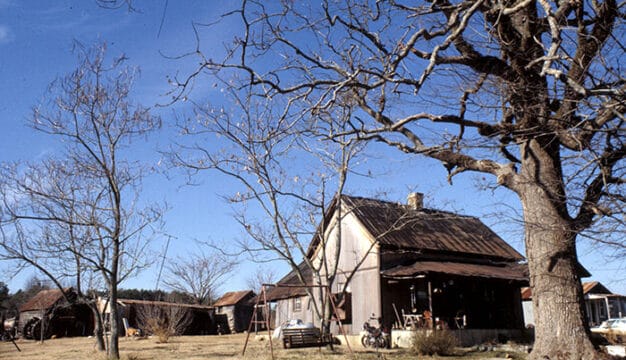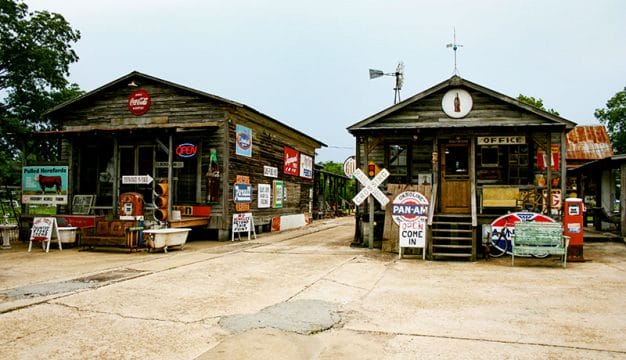Longleaf Pine Forest Ecosystem
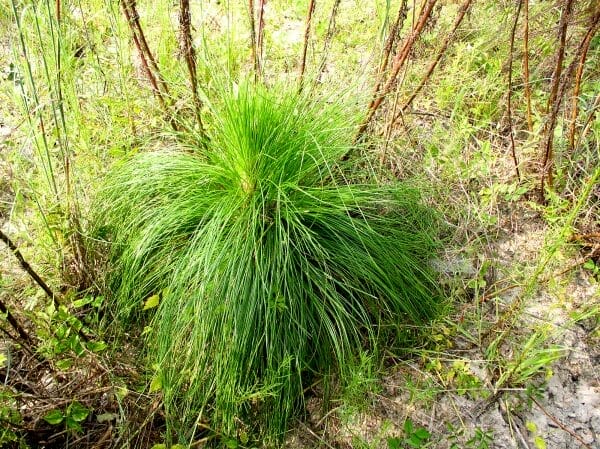 Young Longleaf Pine
Longleaf pine forests once dominated the Coastal Plain physiographic section of Alabama, which covers much of the lower portion of the state. It was excluded only from the Black Belt and northwest portions of the state. North of the Black Belt, longleaf pine forests could be found on dry ridgetops in the Piedmont, Valley and Ridge, Cumberland Plateau, and Highland Rim physiographic sections as far north as Marshall, Etowah, and DeKalb counties. These ridgetop longleaf forests are typically called mountain longleaf forest. Native to the southeastern United States, the longleaf pine (Pinus palustris) grows from Virginia to Texas, inhabiting a variety of sites from very dry to seasonally wet areas. Its original range has been sharply reduced because of agriculture, timbering, and fire suppression. In Alabama, longleaf pine forests are currently confined to the East Gulf Coastal Plain physiographic section, although there are some mountain longleaf stands in the Appalachian foothills and Piedmont. The best place to see areas of mountain longleaf is in the Talladega National Forest and Mountain Longleaf National Wildlife Refuge in Calhoun, Cleburne, Clay, and Talladega Counties. The best examples of Coastal Plain longleaf pine forests may be found in Covington and Escambia counties within the Conecuh National Forest. Escambia County has the highest concentration of longleaf forests in Alabama and one of the highest in the nation.
Young Longleaf Pine
Longleaf pine forests once dominated the Coastal Plain physiographic section of Alabama, which covers much of the lower portion of the state. It was excluded only from the Black Belt and northwest portions of the state. North of the Black Belt, longleaf pine forests could be found on dry ridgetops in the Piedmont, Valley and Ridge, Cumberland Plateau, and Highland Rim physiographic sections as far north as Marshall, Etowah, and DeKalb counties. These ridgetop longleaf forests are typically called mountain longleaf forest. Native to the southeastern United States, the longleaf pine (Pinus palustris) grows from Virginia to Texas, inhabiting a variety of sites from very dry to seasonally wet areas. Its original range has been sharply reduced because of agriculture, timbering, and fire suppression. In Alabama, longleaf pine forests are currently confined to the East Gulf Coastal Plain physiographic section, although there are some mountain longleaf stands in the Appalachian foothills and Piedmont. The best place to see areas of mountain longleaf is in the Talladega National Forest and Mountain Longleaf National Wildlife Refuge in Calhoun, Cleburne, Clay, and Talladega Counties. The best examples of Coastal Plain longleaf pine forests may be found in Covington and Escambia counties within the Conecuh National Forest. Escambia County has the highest concentration of longleaf forests in Alabama and one of the highest in the nation.
Longleaf Pine Lifecycles
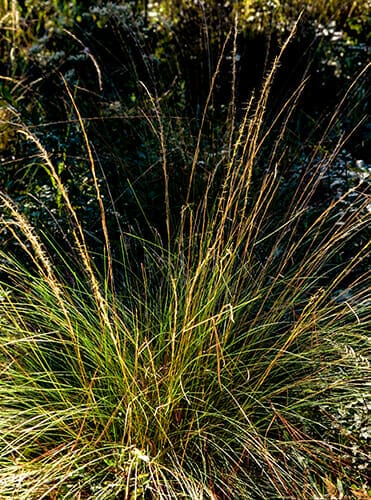 Wiregrass
As in other areas of the South, Alabama’s remaining longleaf pine forests are sparsely treed with an open, grassy understory. In the southernmost part of the state, wiregrass (Aristida beyrichiana) is the dominant species in the understory, whereas north of Mobile, Baldwin, Escambia, and Covington Counties, the dominant grass is bluestem (Andropogon or Schizachyrium). Fire is necessary for the reproduction of the longleaf pine and the many herbaceous understory species that thrive below it. Every component of the forest is adapted for fire, including plant flowering and seeding and nesting of ground-dwelling bird species. Some fire-adapted plants bloom and produce seeds only after a fire, when competition has been reduced. Longleaf pine forests occur where frequent fires have reduced competition and owe their existence to the lightning-ignited fires that have historically occurred over large areas on about a three-year cycle. Longleaf pine is well-adapted to fire, as is evidenced by the seedling stage (also known as the grass stage for the grasslike appearance of the seedlings), thick bark, long flammable needles, white buds that reflect heat, and seeding and germination stages that take place in the autumn after summer fires. After longleaf pine seeds germinate, the new seedlings may grow no more than one inch tall in 10 years as they devote their energy to producing an extensive root system. During this so-called grass stage, seedlings appear as a cluster of needles around a white bud. At this time, seedlings can withstand extensive burning by fire. Once past the grass stage, they become vulnerable to fire but are able to grow tall very rapidly because of their extensive root systems. Most seedlings leave the grass stage 2 to 10 years after germination and then grow quickly to a height of 80 to 120 feet and a diameter of 2 to 2.5 feet. They can live 320 years or longer.
Wiregrass
As in other areas of the South, Alabama’s remaining longleaf pine forests are sparsely treed with an open, grassy understory. In the southernmost part of the state, wiregrass (Aristida beyrichiana) is the dominant species in the understory, whereas north of Mobile, Baldwin, Escambia, and Covington Counties, the dominant grass is bluestem (Andropogon or Schizachyrium). Fire is necessary for the reproduction of the longleaf pine and the many herbaceous understory species that thrive below it. Every component of the forest is adapted for fire, including plant flowering and seeding and nesting of ground-dwelling bird species. Some fire-adapted plants bloom and produce seeds only after a fire, when competition has been reduced. Longleaf pine forests occur where frequent fires have reduced competition and owe their existence to the lightning-ignited fires that have historically occurred over large areas on about a three-year cycle. Longleaf pine is well-adapted to fire, as is evidenced by the seedling stage (also known as the grass stage for the grasslike appearance of the seedlings), thick bark, long flammable needles, white buds that reflect heat, and seeding and germination stages that take place in the autumn after summer fires. After longleaf pine seeds germinate, the new seedlings may grow no more than one inch tall in 10 years as they devote their energy to producing an extensive root system. During this so-called grass stage, seedlings appear as a cluster of needles around a white bud. At this time, seedlings can withstand extensive burning by fire. Once past the grass stage, they become vulnerable to fire but are able to grow tall very rapidly because of their extensive root systems. Most seedlings leave the grass stage 2 to 10 years after germination and then grow quickly to a height of 80 to 120 feet and a diameter of 2 to 2.5 feet. They can live 320 years or longer.
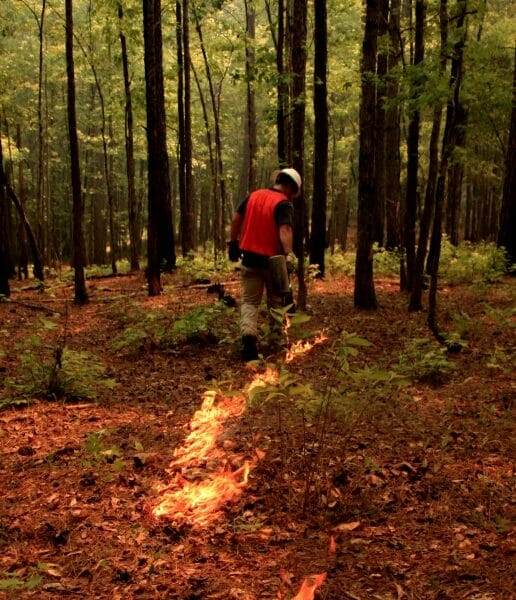 Controlled Burn
Historically, frequent fires resulted in open park-like longleaf pine grassland, as described by naturalist William Bartram in his 1773 writings on the region’s forests. The number of plant species found in the forest can be extraordinarily high, at 40 species per square meter. The open, grassy habitat supports rare animal species, such as Bachman’s sparrow (Aimophila aestivalis), the red-cockaded woodpecker (Dryobates borealis), the eastern indigo snake (Drymachron corais), the southeastern pocket gopher (Geomys pinetis), and the gopher tortoise (Gopherus polyphemus). Some 35 amphibian, 56 reptile, 88 bird, and 40 mammal species inhabit longleaf pine forests. The great diversity of plants and animals results from the extreme variation of very dry to wet soils and frequent fire. Some of the longleaf forests on private land owe their continued existence to quail hunters who have maintained them with fire.
Controlled Burn
Historically, frequent fires resulted in open park-like longleaf pine grassland, as described by naturalist William Bartram in his 1773 writings on the region’s forests. The number of plant species found in the forest can be extraordinarily high, at 40 species per square meter. The open, grassy habitat supports rare animal species, such as Bachman’s sparrow (Aimophila aestivalis), the red-cockaded woodpecker (Dryobates borealis), the eastern indigo snake (Drymachron corais), the southeastern pocket gopher (Geomys pinetis), and the gopher tortoise (Gopherus polyphemus). Some 35 amphibian, 56 reptile, 88 bird, and 40 mammal species inhabit longleaf pine forests. The great diversity of plants and animals results from the extreme variation of very dry to wet soils and frequent fire. Some of the longleaf forests on private land owe their continued existence to quail hunters who have maintained them with fire.
Decline of Longleaf Pine Forests
 Felling Longleaf Pines
Prior to the colonial era, the longleaf pine ecosystem was the most extensive in North America, at 90 million acres. The acreage of longleaf pine forest is now reduced to only an estimated 2.7 million acres. Because of this drastic reduction, the forest ecosystem, rather than the tree itself, is considered to be endangered. The decline is the result of extensive logging and clearcutting to make way for agriculture or pine plantations, urban development, and suppression of the fires needed for seedling germination. With fewer fires, hardwoods and other fire-intolerant species have increased in abundance.
Felling Longleaf Pines
Prior to the colonial era, the longleaf pine ecosystem was the most extensive in North America, at 90 million acres. The acreage of longleaf pine forest is now reduced to only an estimated 2.7 million acres. Because of this drastic reduction, the forest ecosystem, rather than the tree itself, is considered to be endangered. The decline is the result of extensive logging and clearcutting to make way for agriculture or pine plantations, urban development, and suppression of the fires needed for seedling germination. With fewer fires, hardwoods and other fire-intolerant species have increased in abundance.
As the forest has declined, many plant and animal species associated with it have also declined, and some have been extirpated or in a few cases become extinct. Endangered and threatened plant species include the panhandle meadow-beauty (Rhexia salicifolia), whitetop pitcher plant (Sarracenia leucophylla), and Wherry’s sweet pitcher plant (Sarracenia rubra ssp. wherryi). Endangered and threatened animal species include the red-cockaded woodpecker (Picoides borealis), eastern indigo snake (Drymarchon corais), gopher tortoise (Gopherus polyphemus), various gopher frogs (genus Rana), and Bachman’s sparrow (Aimophila aestivalis). Prior to extensive human habitation, woodland bison, elk, and cougar inhabited the longleaf pine forests.
Longleaf pine is an excellent timber species capable of producing high-quality wood even on poor sites. Historically, it was important economically as a source of turpentine and lumber. Much of the heart pine found in old buildings is longleaf pine. By 1930, nearly all the old longleaf pine forests in Alabama had been harvested. They were then unable to regenerate because of fire suppression and land conversion to agriculture.
The Future of the Longleaf Ecosystem
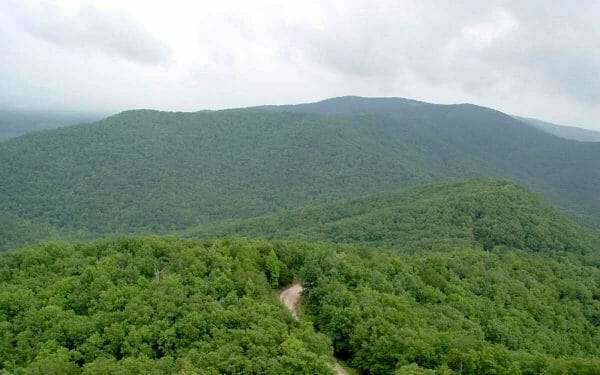 Mountain Longleaf National Wildlife Refuge
Public awareness of the importance of longleaf pine forests has increased since 1995 thanks to the efforts of the Longleaf Alliance and state and federal agencies, such as the U.S. Forest Service, U.S. Fish and Wildlife Service, and the Alabama Forestry Commission to name a few. The Longleaf Alliance, located at Auburn University, promotes the economic, ecological and social importance of longleaf pine forests and their restoration. Restoration efforts are occurring on most federal lands and some private lands within its historic range. Fire in the growing season, on a three to four year rotation, is used to reduce the presence of midstory trees and shrubs so that grasses and understory can return. In some cases, mechanical and chemical removal of the midstory is necessary. Where species such as loblolly and slash pines are growing on inappropriate sites, they are removed and longleaf is planted. These restoration efforts will benefit the longleaf pines and the plant and animal species associated with the ecosystem. The vast longleaf pine forests of prehistoric North America will not return, but through private, federal, and state efforts, conservationists hope that the current acreage can be maintained and possibly increased in the future.
Mountain Longleaf National Wildlife Refuge
Public awareness of the importance of longleaf pine forests has increased since 1995 thanks to the efforts of the Longleaf Alliance and state and federal agencies, such as the U.S. Forest Service, U.S. Fish and Wildlife Service, and the Alabama Forestry Commission to name a few. The Longleaf Alliance, located at Auburn University, promotes the economic, ecological and social importance of longleaf pine forests and their restoration. Restoration efforts are occurring on most federal lands and some private lands within its historic range. Fire in the growing season, on a three to four year rotation, is used to reduce the presence of midstory trees and shrubs so that grasses and understory can return. In some cases, mechanical and chemical removal of the midstory is necessary. Where species such as loblolly and slash pines are growing on inappropriate sites, they are removed and longleaf is planted. These restoration efforts will benefit the longleaf pines and the plant and animal species associated with the ecosystem. The vast longleaf pine forests of prehistoric North America will not return, but through private, federal, and state efforts, conservationists hope that the current acreage can be maintained and possibly increased in the future.
Further Reading
- Brockway, D. G., et al. Restoration of Longleaf Pine Ecosystems. Washington, D.C.: USDA Forest Service, GTR SRS-83, 2005.
- Early, L. S. Looking for Longleaf: The Fall and Rise of an American Forest. Chapel Hill: University of North Carolina Press, 2004.
- Horton, T. “Longleaf Pine: A Southern Revival.” Audubon 97 (1995): 75-80.
- Landers, J. L., D. H. Van Lear, and W. D. Boyer. “The Longleaf Pine Forests of the Southeast: Requiem or Renaissance?” Journal of Forestry 93 (1995): 39-44.

